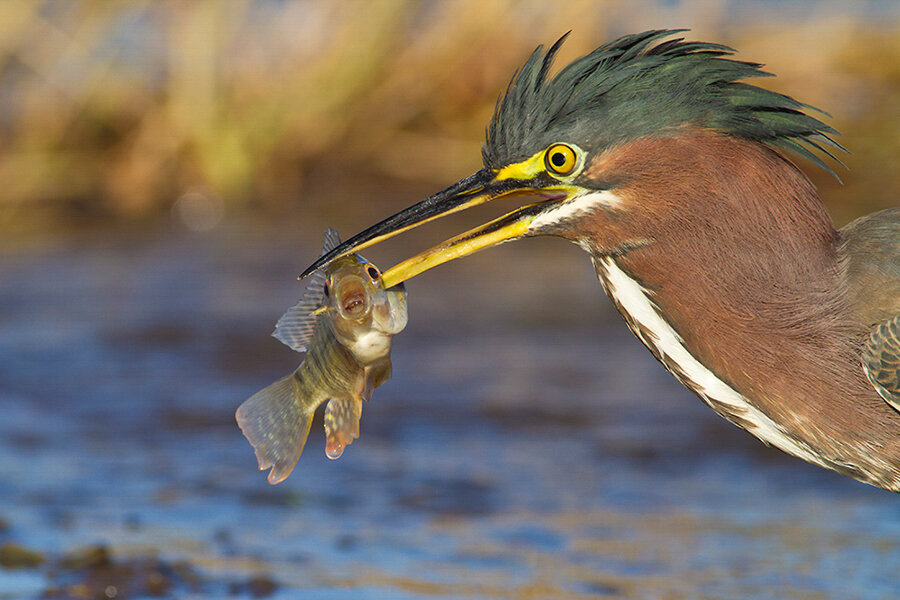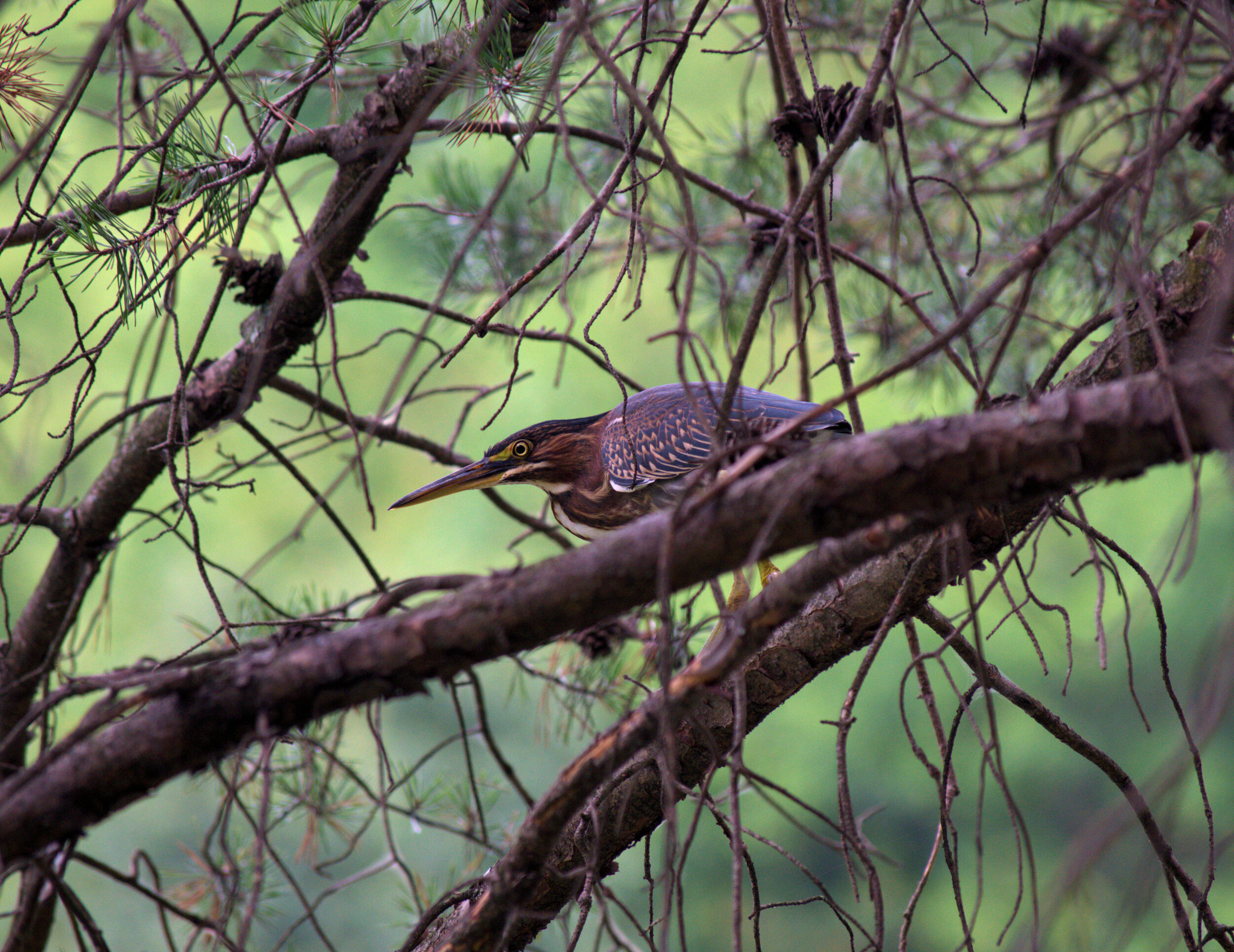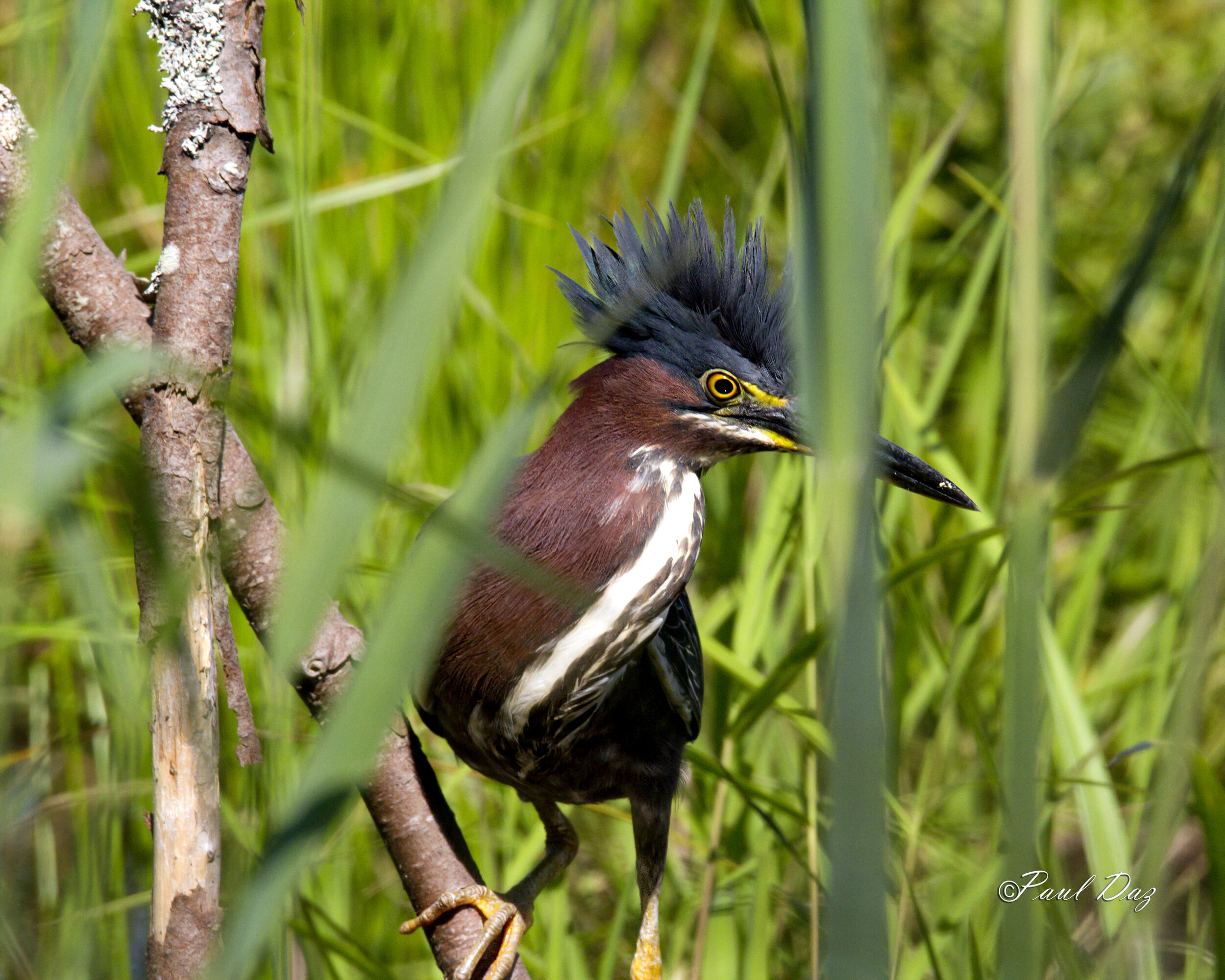Audubon at Home Sanctuary Species
Green Heron (Butorides virescens)
This small heron is at home in both salt water and fresh water and can be found along most shoreline habitats from streams and ponds to rivers and bays. Green herons in the Mid-Atlantic are migratory, spending the winter from Floridan and Mexico southward, and returning north between late March and late April. If you take care of your neighborhood streams and ponds, or even create your own backyard wetland pool, you may be visited by this skilled wetland hunter.
To learn more about ID, range, breeding, and voice, visit Cornell’s All About Birds
| What Green Herons Need | How Can We Help |
|---|---|
| Food and Water: Small fish, frogs, crayfish, snails, many insects, leeches, earthworms, small snakes, and mice. Green Herons can stand patient and motionless perching on a branch over water, waiting for small prey to swim by, stabbing it with a lightning strike of its pointed bill. Sometimes, it will wade slowly through the water, stop to rake the bottom with outstretched toes, then peer down to watch for moving prey. | - Preserve marshes and forested wetlands that provide food and shelter for Green Herons. Preserve or restore vegetated riparian buffers to protect the stream’s water quality and provide habitat and shelter for Green Herons and their prey animals.
- Keep exotic invasive species like Hydrilla and Phragmites out of local wetlands to insure that Green Herons and other wading birds have plenty of aquatic prey and healthy, intact habitat. |
| Shelter: Green Herons are shy and often “hide in plain sight” by remaining perfectly still for long periods of time. They look for thickly vegetated shorelines to enhance their ability to hide, so prefer plant-filled watersides to bare ones. They roost in trees, often pines. | - To enhance their ability to find food and safe shelter, keep streams clear of trash, reduce your use of pesticides and fertilizers, and leave a wide unmowed strip on local stream banks, pond shorelines, or other wetland buffers. Densely plant riparian shrubs and plants such as Silky Dogwood, Buttonbush, etc. |
| Nesting: Green Herons nest singly, or occasionally in small colonies. The nest is flat, made of interwoven sticks, and 10-15’ high. The nest is made on forested edges of aquatic habitats, often suspended over water. In treeless marshes it will be constructed on a tussock of emergent vegetation. | - Allow trees to grow along pond and stream banks. Keep dogs on leash when near heron nesting sites. |
| Other Threats: Fishing line, six-pack yokes, pollutants and clearing of shoreline buffers are threats to this heron. | - Vegetated shorelines, healthy aquatic plant communities, decent water quality and a few well-placed hunting perches, combine to attract this stealthy hunter. |
Where to see Green Herons and their Habitat:
Occoquan Bay National Wildlife Refuge
Find more using eBird Data: Narrow the view by entering your county in the “DATA FOR:” filter




